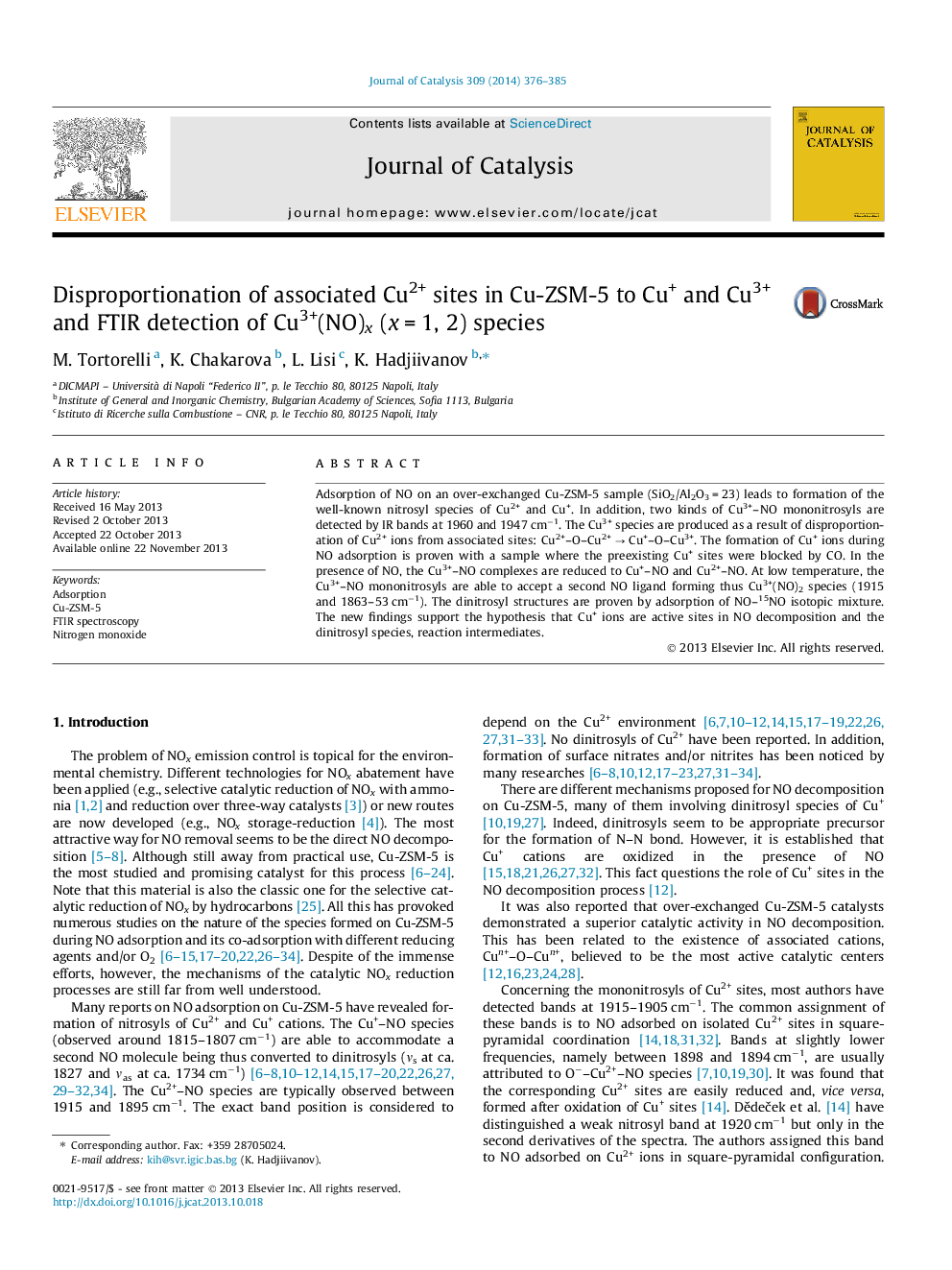| کد مقاله | کد نشریه | سال انتشار | مقاله انگلیسی | نسخه تمام متن |
|---|---|---|---|---|
| 61128 | 47565 | 2014 | 10 صفحه PDF | دانلود رایگان |

• Adsorption of NO on Cu-ZSM-5 causes disproportionation of Cu2+ to Cu+ and Cu3+ ions.
• The process occurs with participation of associated [Cu–O–Cu]2+ sites even at 100 K.
• The Cu3+ ions form two kinds of mononitrosyl species (1960 and 1947 cm−1).
• The Cu3+–NO species can accept a second NO molecule thus forming dinitrosyls.
• At ambient temperature, Cu3+ ions are reduced by NO to Cu+ and Cu2+.
Adsorption of NO on an over-exchanged Cu-ZSM-5 sample (SiO2/Al2O3 = 23) leads to formation of the well-known nitrosyl species of Cu2+ and Cu+. In addition, two kinds of Cu3+–NO mononitrosyls are detected by IR bands at 1960 and 1947 cm−1. The Cu3+ species are produced as a result of disproportionation of Cu2+ ions from associated sites: Cu2+–O–Cu2+ → Cu+–O–Cu3+. The formation of Cu+ ions during NO adsorption is proven with a sample where the preexisting Cu+ sites were blocked by CO. In the presence of NO, the Cu3+–NO complexes are reduced to Cu+–NO and Cu2+–NO. At low temperature, the Cu3+–NO mononitrosyls are able to accept a second NO ligand forming thus Cu3+(NO)2 species (1915 and 1863–53 cm−1). The dinitrosyl structures are proven by adsorption of NO–15NO isotopic mixture. The new findings support the hypothesis that Cu+ ions are active sites in NO decomposition and the dinitrosyl species, reaction intermediates.
Figure optionsDownload high-quality image (82 K)Download as PowerPoint slide
Journal: Journal of Catalysis - Volume 309, January 2014, Pages 376–385